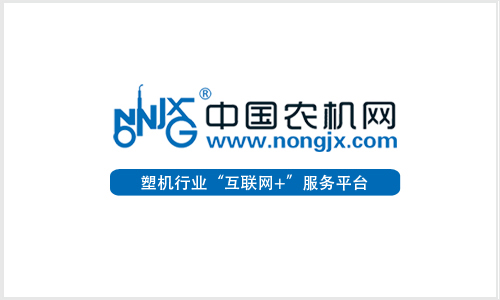[ China Agricultural Machinery Industry News ] From the perspective of the policy guidance spirits that have been disclosed, the structural reform of the agricultural supply side is the policy focus, covering the reform of agricultural product price formation mechanism, land reform, and rural property rights reform. Related to this, the Central Rural Work Conference held from December 19th to 20th, in addition to setting the structural reform of the agricultural supply side, also focused on the first draft of the “Central No. 1 Document†in 2017. The official draft is expected to be released at the end of January next year. .

Market-oriented reforms in the future may extend to rice and wheat
The expression “agricultural supply side structural reform†emerged at the Central Rural Work Conference a year ago.
"The corn subsidy has come down, but the subsidy for soybeans has not yet come down." On December 21, Yan Yanmin, a large corn planter at the 597 Farm of the Hongxinglong Branch of the Heilongjiang Provincial Agricultural Reclamation Bureau, said happily.
"With the cancellation of the corn storage policy this year, corn purchases and sales are faced with the double problem of falling prices and weak demand, and the acquisition situation is extremely severe." On the 22nd, Li Guoxiang, director of the Institute of Rural Development of the Chinese Academy of Social Sciences, said that from the "leading" corn The reform of the storage system to the supportive agricultural land system reform aims to improve the quality and efficiency of agricultural supply through market-oriented reforms.
From the perspective of the policy guidance spirits that have been disclosed, the structural reform of the supply side of agriculture is the policy focus, covering the reform of agricultural product price formation mechanism, land reform, and rural property rights reform. Related to this, the Central Rural Work Conference held from December 19th to 20th, in addition to setting the structural reform of the agricultural supply side, also focused on the first draft of the “Central No. 1 Document†in 2017. The official draft is expected to be released at the end of January next year. .
Improve corn supply and demand
The reform of the agricultural supply side is mainly the adjustment of the “structureâ€. The supply-side reform is not to reduce the supply of agricultural products, but to adjust. "This adjustment is already under way. First, the cotton is changed from a temporary reserve policy to a direct subsidy policy. Then the corn temporary storage policy is changed to 'price-separation separation'." Li Guoxiang said.
The reporter noted that the "National Agricultural Modernization Plan (2016-2020)" issued by the State Council on October 20 once again proposed to adjust and optimize the planting structure, reduce corn, increase beans, and develop large-scale cotton, sugar and other planting bases. "The country is determined to promote corn market reform," Li Guoxiang said.
Food security is the fundamental principle. "This year, the foreign subsidies for corn issued to farmers in the country have encouraged farmers to grow corn to a certain extent. In the future, subsidies will not be reduced, but will increase." Li Guoxiang said.
Since the beginning of this year, the Ministry of Agriculture has focused on the nine key points, ranking the focus on corn and promoting the restructuring of the crop industry. The idea is to "guarantee grain and reduce corn."
The reporter learned from relevant departments that, in accordance with the deployment of the State Council, the relevant departments will push forward the implementation of measures related to the reform of the corn storage system and accelerate the adjustment of corn planting structure. The data shows that the production of rice and wheat rations in China has remained stable this year, and the corn with high inventory pressure has been reduced by more than 30 million mu, and the area of ​​soybeans that are in short supply in the market has increased by more than 9 million mu.
This year is the new mechanism for implementing the “market-based acquisition†and “subsidy†for corn. Ye Xingqing, Minister of Rural Affairs of the Development Research Center of the State Council, said that it is the price mechanism to solve the structural problems of the agricultural supply side by means of reform.
Going to stock is an urgent task
The reason why the country canceled the implementation of the eight-year corn reserve acquisition policy is that the domestic corn market has experienced a serious oversupply situation. "Now the country's large inventory is corn, up to 250 million tons." According to Ye Haoqin, director of the General Office of the Ministry of Agriculture, last year the country announced 12 consecutive increases in food, more than half of the "credit" attributed to corn.
"In the past two years, the country's corn stocks were overcrowded, and the domestic corn price was higher than that of foreign corn, which made the country's foreign auctioned corn losers unable to sell." On the 22nd, an unnamed official of China Grain Reserve told the China Times. (Public number: chinatimes) The reporter revealed that the annual inventory cost per ton of corn is about 252 yuan, and the annual cost of corn stocks that the national finance needs to pay exceeds 63 billion yuan, which is a huge expense. Therefore, corn "destocking" is an urgent task.
The implementation of the "new market policy, price and compensation separation" of the new corn policy will not only adjust the upstream corn planting area, adjust production, but also reduce the total amount of corn stocks and reduce the country's financial burden. The effect of the reform is obvious. Li Guoxiang believes that the direction of the state's acquisition of corn from the "premium" system to the "market pricing, price-complementation" system is correct, but the reform of grain control policy is a long-term project, and it cannot be done overnight.
lubrication oil filter,microporous film filter,microporous filter
Huatao Group , https://www.huataofilter.com
